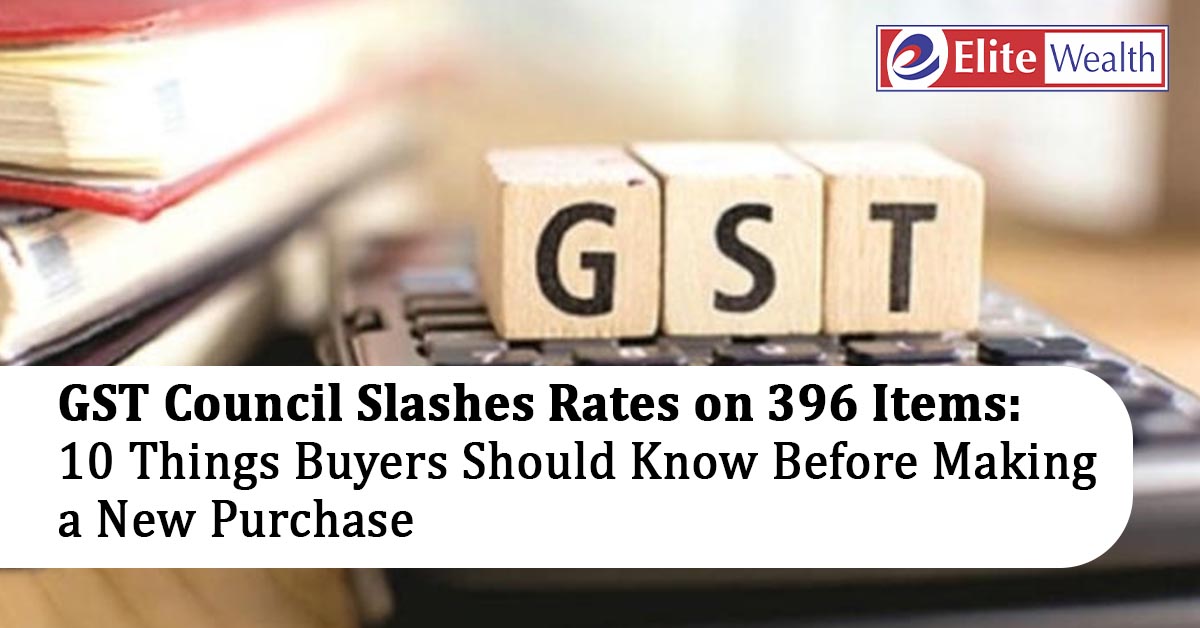
The 56th meeting of the Goods and Services Tax (GST) Council, chaired by Union Finance Minister Nirmala Sitharaman, concluded on September 4, 2025, after two days of deliberations. In one of the biggest tax overhauls since GST was introduced in 2017, the Council approved a rate reduction on 396 items, aiming to simplify the structure and reduce the burden on households. The revised rates will come into effect from September 22, 2025.
Here are the 10 most important highlights from GST 2.0 that every consumer and business should know before making their next purchase:
- New Simplified GST Slabs
The Council has streamlined GST into just two primary slabs—5% and 18%—along with a special 40% slab for luxury and sin goods. This move is expected to make compliance easier while lowering costs for the average consumer.
- Insurance Gets GST-Free Status
A major reform for financial inclusion—all individual life insurance policies (term life, ULIPs, endowment) and health insurance policies (including family floaters and senior citizen plans) are now completely exempt from GST. This is expected to improve affordability and widen insurance coverage across India.
- Higher Threshold for Footwear and Apparel
To provide relief to lower-income households, the 5% GST threshold on footwear and apparel has been raised from ₹1,000 to ₹2,500, making mid-range products more affordable.
- Daily Essentials at Zero GST
Everyday essentials such as paneer, UHT milk, and all varieties of Indian bread (chapati, paratha, roti, etc.) are now GST-free. This move directly lowers household grocery bills.
- Food and Beverages Made Cheaper
Several commonly consumed food items have shifted from 18% to 5% GST, including:
- Butter, ghee, and dry fruits
- Condensed milk, sausages, and meats
- Jams, jellies, fruit pulp, and juices
- Tender coconut water, namkeen, and drinking water in 20-litre bottles
- Biscuits, chocolates, cornflakes, and breakfast cereals
- Personal Care Products See Relief
Everyday use items like soap, shampoo, toothpaste, toothbrushes, talcum powder, and hair oil will now attract only 5% GST, down from 18%.
- Rationalised GST on Automobiles and Consumer Durables
The automobile sector received a major boost as GST was reduced from 28% to 18% on:
- Petrol/LPG/CNG vehicles (up to 1,200 cc, under 4,000 mm length)
- Diesel vehicles (up to 1,500 cc, under 4,000 mm length)
- Motorcycles up to 350 cc
Consumer electronics such as air conditioners, TVs, and dishwashers will also now fall under the 18% bracket, making them more affordable.
- Cement Prices Expected to Drop
GST on cement has been cut from 28% to 18%, a move expected to reduce construction and housing costs, benefiting the real estate sector and homebuyers.
- Higher GST on Premium Apparel and Footwear
While mass-market goods get cheaper, footwear and clothing priced above ₹2,500 will now attract 18% GST, up from the previous 12%, keeping luxury consumption taxed higher.
- Luxury and Sin Goods Under 40% Slab
A new 40% slab has been created for luxury and sin goods. This includes:
- High-end petrol and diesel vehicles (above 1,200/1,500 cc, length over 4,000 mm)
- Motorcycles above 350 cc
- Yachts, personal aircraft, racing cars, and station wagons
- Tobacco products (gutkha, cigarettes, chewing tobacco, etc.)
The government also shifted valuation for these products to Retail Sale Price (RSP) instead of transaction value, tightening compliance and ensuring higher tax collection.
Summary:
The GST 2.0 reforms mark a significant rationalisation of India’s indirect tax system. With 396 items seeing tax reductions, households are expected to save more, while sectors such as automobiles, real estate, FMCG, and healthcare stand to benefit from stronger consumer demand. At the same time, the higher 40% slab ensures that luxury and sin goods remain heavily taxed, maintaining revenue balance.
Disclaimer:
This article is intended solely for educational and informational purposes. The securities or companies mentioned are provided as examples and should not be considered as recommendations. Nothing contained herein constitutes personal financial advice or investment recommendations. Readers are advised to conduct their own research and consult a qualified financial advisor before making any investment decisions.
Investments in securities markets are subject to market risks. Please read all related documents carefully before investing.
